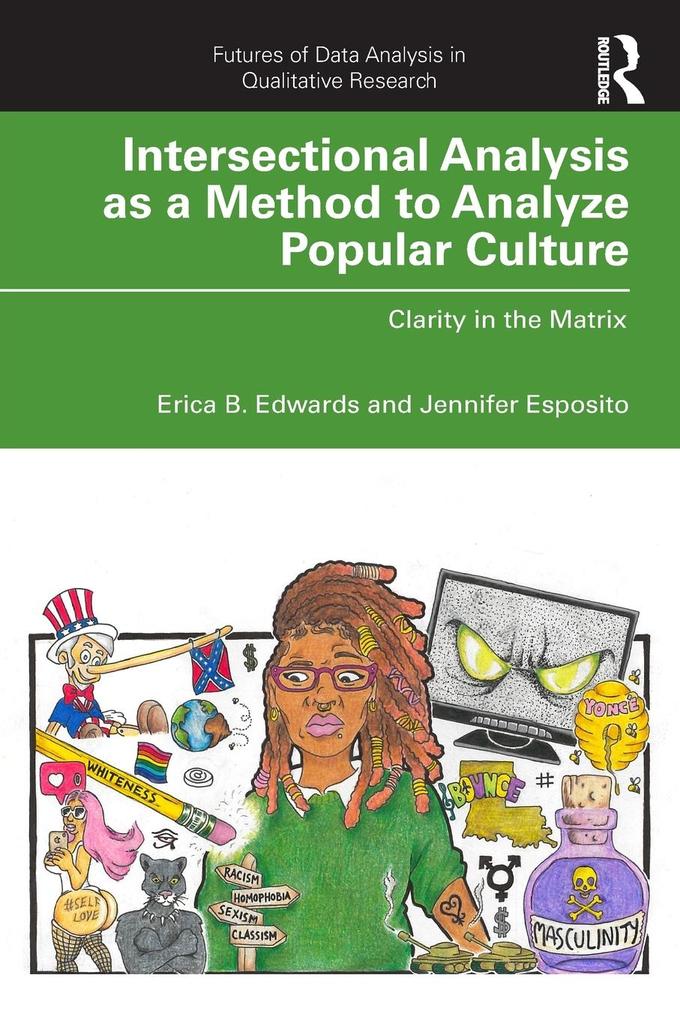
Zustellung: Mo, 19.05. - Do, 22.05.
Versand in 6 Tagen
VersandkostenfreiBestellen & in Filiale abholen:
Intersectional Analysis as a Method to Analyze Popular Culture: Clarity in the Matrix explores how race, class, gender, sexuality, and other social categories are represented in, and constructed by, some of the most significant popular culture artifacts in contemporary Western culture.
Through readings of racialized television sitcoms, LGBTQ+ representation in mainstream American music, the role of Black Panther in Western imperialist projects, and self-love narratives promoted by social media influencers, it demonstrates how novice and emerging researchers can use intersectional theory as an analysis method in the field of cultural studies. The case studies presented are contextualized through a brief history of intersectional theory, a methodological rationale for its use in relation to popular culture, and a review of the ethical considerations researchers should take before, during, and after they approach popular artifacts.
Intended to be a textbook for novice and emerging researchers across a wide range of social science disciplines, this book serves as a practical guide to uncover the multiple and interlocking ways oppression is reified, resisted and/or negotiated through popular culture.
2021 Winner of the AESA Critics' Choice Book Award
Through readings of racialized television sitcoms, LGBTQ+ representation in mainstream American music, the role of Black Panther in Western imperialist projects, and self-love narratives promoted by social media influencers, it demonstrates how novice and emerging researchers can use intersectional theory as an analysis method in the field of cultural studies. The case studies presented are contextualized through a brief history of intersectional theory, a methodological rationale for its use in relation to popular culture, and a review of the ethical considerations researchers should take before, during, and after they approach popular artifacts.
Intended to be a textbook for novice and emerging researchers across a wide range of social science disciplines, this book serves as a practical guide to uncover the multiple and interlocking ways oppression is reified, resisted and/or negotiated through popular culture.
2021 Winner of the AESA Critics' Choice Book Award
Inhaltsverzeichnis
Acknowledgements
Chapter 1. Introduction
Chapter 2. Methodological Rationale
Chapter 3. Ethics and Popular Culture: What are the Boundaries?
Chapter 4. Reading Television Sitcoms Intersectionally
Chapter 5. Reading Popular Music Intersectionally
Chapter 6. Reading Film Intersectionally
Chapter 7. Reading Social Media Intersectionally
Chapter 8. Epilogue
Chapter 1. Introduction
Chapter 2. Methodological Rationale
Chapter 3. Ethics and Popular Culture: What are the Boundaries?
Chapter 4. Reading Television Sitcoms Intersectionally
Chapter 5. Reading Popular Music Intersectionally
Chapter 6. Reading Film Intersectionally
Chapter 7. Reading Social Media Intersectionally
Chapter 8. Epilogue
Produktdetails
Erscheinungsdatum
03. Dezember 2019
Sprache
englisch
Seitenanzahl
190
Autor/Autorin
Jennifer Esposito, Erica B. Edwards
Verlag/Hersteller
Produktart
kartoniert
Gewicht
298 g
Größe (L/B/H)
234/156/10 mm
ISBN
9780367173425
Entdecken Sie mehr
Bewertungen
0 Bewertungen
Es wurden noch keine Bewertungen abgegeben. Schreiben Sie die erste Bewertung zu "Intersectional Analysis as a Method to Analyze Popular Culture" und helfen Sie damit anderen bei der Kaufentscheidung.











